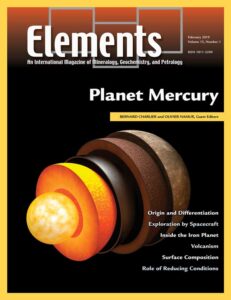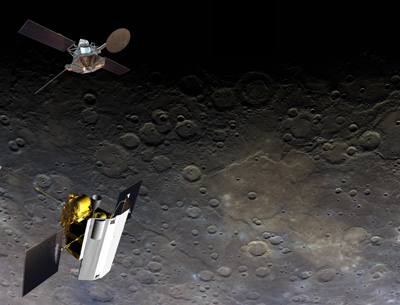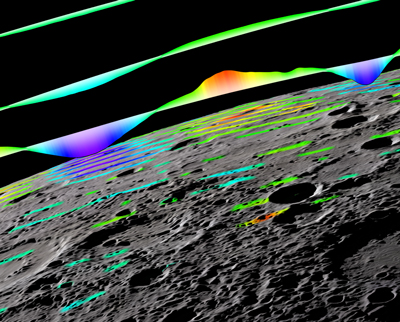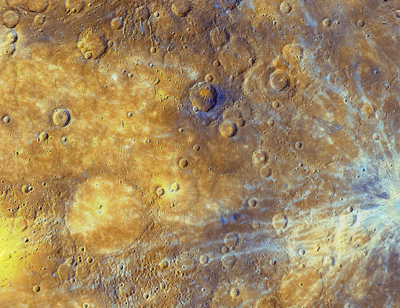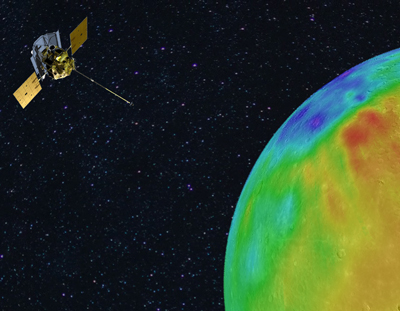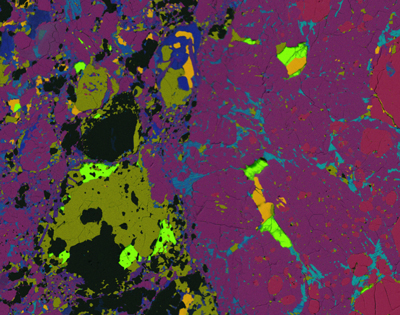Planet Mercury
Bernard Charlier and Olivier Namur – Guest Editors
Table of Contents
Mercury is unique among terrestrial planets because of its very high metal/silicate ratio. The NASA MESSENGER mission ended in 2015 and significantly advanced our understanding of the deep structure of the planet as well as our comprehension of Mercury’s volcanic history and crust formation. The European Space Agency (ESA) recently launched the BepiColombo mission in October 2018. The “Planet Mercury” issue summarizes the latest developments in light of MESSENGER data and perspectives for the BepiColombo mission on internal structures and surface processes, based on insights from geophysics, geochemistry, igneous and experimental petrology and volcanology.
- The Origin and Differentiation of Planet Mercury
- The Exploration of Mercury by Spacecraft
- Mercury: Inside the Iron Planet
- Volcanism on Mercury
- The Surface Composition of Mercury
- The Role of Reducing Conditions in Building Mercury
9th European Conference on Mineralogy and Spectroscopy
Analab
Cambridge University Press
CAMECA
Dr. Eduard Gubelin Association
Excalibur Mineral Corporation
GAC-MAC-IAH Conference
Geomological Institute of America
Lochaber Geopark
ODLAB
ProtoXRD
Savillex
Volume 15, Number 2 (April) • Reactive Transport Modeling
GUEST EDITORS: Kate Maher (Stanford University, USA) and K. Ulrich Mayer (University of British Columbia, Canada)
Reactive transport modeling, or computer simulations of the transfer of mass and energy through the subsurface, has become a central tool for understanding how Earth’s unique chemical environments are formed, how they function today, and how they might behave in the future. This process-based approach has enabled us to gain new understanding of a diverse array of earth processes, from biogeochemical cycles in marine sediments and the factors that control soil formation, to the evolution of contaminated groundwater systems and the engineered containment of nuclear waste. This issue brings together diverse contributions highlighting the unique role that reactive transport models have played in advancing our understanding of Earth’s shallow crustal environments and human interactions with them.
- Tracking Diverse Minerals, Hungry Organisms and Dangerous Contaminants Using Reactive Transport Models Kate Maher (Stanford University, USA) and K. Ulrich Mayer (University of British Columbia, Canada)
- Reactive Transport Modeling of Microbial Dynamics in Soils and Sediments Christof Meile (University of Georgia, USA) and Timothy Scheibe (Pacific Northwest National Laboratory, USA)
- Reactive Transport of Stable Isotopes Jennifer L. Druhan (University of Illinois Urbana Champaign, USA) and Matthew J. Winnick (University of Massachusetts Amherst, USA)
- Modeling Continental Weathering Processes Across Spatial and Temporal Scales Yves Goddéris and Jacques Schott (CNRS, France), Susan Brantley (Pennsylvania State University, USA)
- Using Reactive Transport Models for Understanding, Quantifying and Predicting Groundwater Quality Changes Henning Prommer (University of Western Australia, CSIRO, and National Center for Groundwater Research and Training, Australia) Jing Sun (University of Western Australia and CSIRO, Australia) and Benjamin D. Kocar (Massachusetts Institute of Technology, USA)
- Modeling the Fate of Carbon Dioxide in the Subsurface Anna Harrison (University College London, UK), Benjamin M. Tutolo (University of Calgary, Canada), Donald J. DePaolo (University of California, Berkeley and Lawrence Berkeley National Laboratory, USA)
- Reactive Transport Models for Long-Term Safety Assessment of Nuclear Waste Disposal Laurent De Windt (MINES ParisTech, France) and Nicolas Spycher (Lawrence Berkeley National Laboratory, USA)
- Planet Mercury (February 2019)
- Reactive Transport Modeling (April 2019)
- South Aegean Magmatic Arc (June 2019)
- Weathering: A Unifying Process in the Geosciences (August 2019)
- Catastrophic Perturbations to Earth’s Carbon Cycle (October 2019)
- Kimberlites (December 2019)



